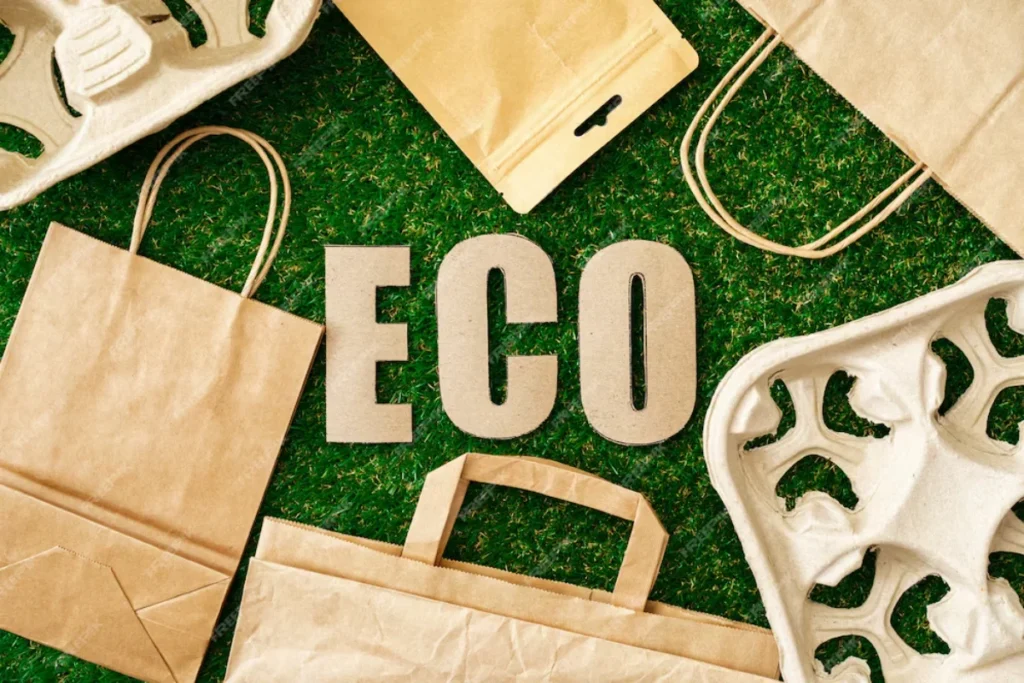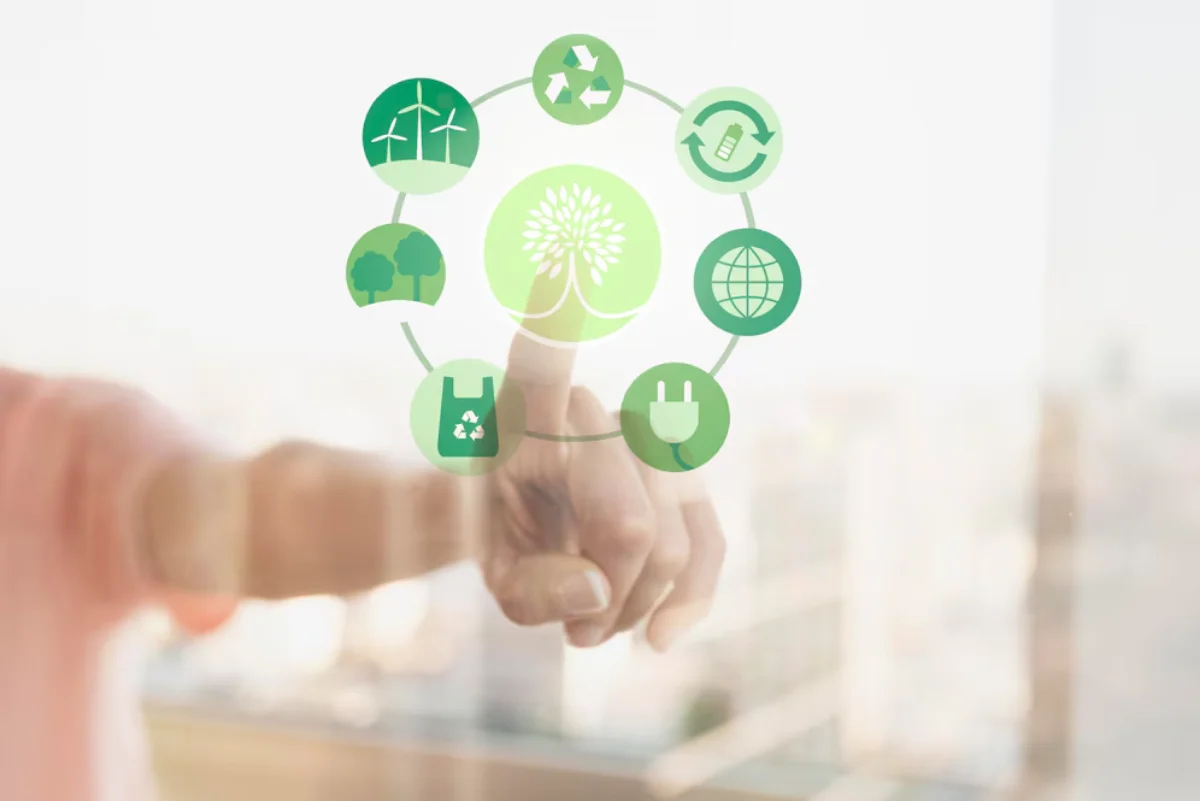The E-commerce Blog

Sustainable Retail: Strategies for Eco-Friendly Practices
The Growing Importance of Sustainability in Retail
In today’s rapidly evolving marketplace, sustainable retail is no longer a niche concept—it is a necessity. Consumers care more about the environment. So, they want brands to be clear and responsible. Eco-friendly strategies and ethical practices can’t be an afterthought. They must be central to how a business operates.
This shift is not just driven by ethics. It is also by regulatory requirements, economic incentives, and competitive advantage. In this article, we look at important sustainable retail strategies. These can help businesses cut their environmental impact. They also boost brand image and profits.
Why Sustainability Matters in Retail
1. Changing Consumer Preferences
Shoppers are becoming more discerning, favouring brands that demonstrate a commitment to sustainability. Research indicates:
- 73% of shoppers worldwide say they would change how they shop to be kinder to the environment (Source: Nielsen).
- 81% of people feel strongly that companies should help improve the environment (Source: IBM).
- 50% of digital consumers look for details about a brand’s sustainability before buying. (Source: GlobalWebIndex).
Consumers will pay more for sustainable products. This means brands that share these values can gain stronger customer loyalty and increase revenue.
2. Regulatory and Industry Pressures
Governments worldwide are tightening environmental regulations to mitigate climate change and reduce waste. Some key policies affecting retailers include:
- The UK’s Plastic Packaging Tax encourages companies to use recycled materials.
- The EU Green Deal imposes stricter waste management and supply chain transparency requirements.
- The push for carbon neutrality by 2050 requires retailers to track and reduce emissions.
Retailers can protect their businesses by adapting to these regulations. This helps them avoid fines and damage to their reputation.
3. Cost Savings and Business Efficiency
Adopting eco-friendly strategies might cost money upfront, but the long-term savings are significant. Sustainable retail practices can lead to the following:
- Lower energy bills through LED lighting and smart HVAC systems.
- Reduced waste management costs by optimising packaging and product lifecycles.
- Improved supply chain efficiencies, reducing transportation and storage expenses.
Integrating sustainability into operations helps businesses boost profits and lower their environmental impact.
Key Strategies for Sustainable Retail

1. Sustainable Supply Chains
A retailer’s supply chain significantly impacts its environmental footprint. Sustainable supply chain strategies include:
- Ethical Sourcing: Ensuring raw materials come from fair trade and environmentally responsible sources.
- Local Sourcing: Reducing transportation emissions by working with local suppliers.
- Sustainable Materials: Using organic, biodegradable, or recycled materials for manufacturing.
- Clear Supply Chains: Using blockchain and AI to monitor ethical sourcing and cut inefficiencies.
Top retailers like Patagonia and IKEA have built sustainable supply chains. This shows that ethical sourcing can be profitable and make a difference.
2. Eco-Friendly Packaging and Waste Reduction
Packaging waste is a major cause of pollution. Retailers need to focus on sustainable packaging solutions.
- Minimalist Packaging: Using only necessary materials to reduce waste.
- Recyclable and Biodegradable Packaging: Switching from plastic to paper, compostable, or reusable alternatives.
- Refill Stations: Let customers fill their own containers with products like detergents and beauty items.
- Zero-Waste Commitments: Implementing take-back schemes where customers return packaging for reuse or recycling.

Brands like Lush and The Body Shop have started packaging return schemes. These programs encourage customers to join in on sustainability efforts.
3. Energy-Efficient Retail Operations
Retailers can greatly reduce their carbon footprint by improving energy efficiency in stores and warehouses.
- LED Lighting: Consuming up to 75% less energy than conventional bulbs.
- Smart HVAC Systems: Control temperature wisely to save energy.
- Solar and Renewable Energy Integration: Install solar panels to power operations and cut down on fossil fuel use.
- Smart Store Technologies: Using AI to predict customer traffic and adjust energy use accordingly.
4. Ethical Business Practices and Corporate Social Responsibility (CSR)
Sustainability extends beyond environmental responsibility to include ethical business practices:
- Fair Wages and Safe Working Conditions: Ensuring workers in the supply chain are treated fairly.
- Diversity and Inclusion Initiatives: Promoting workplace equity and supporting underrepresented groups.
- Transparent Reporting: Publicly disclosing sustainability initiatives and progress.
Retailers like Eileen Fisher prioritise ethical production. This ensures that every step of their supply chain aligns with social responsibility values.
5. The Circular Economy: Extending Product Life Cycles
A circular economy aims to minimise waste by keeping products and materials in use for as long as possible. Retailers can adopt:
- Buy-Back and Resale Programmes: Brands like Levi’s and H&M offer pre-loved clothing collections.
- Repair and Upcycling Services: Encouraging customers to repair products instead of discarding them.
- Subscription-Based Retail Models: Offering rentals instead of ownership. This is seen with fashion brands like Rent the Runway.
6. Digitalisation and AI for Sustainability
Technology can play a significant role in making retail more sustainable. Some innovative solutions include:
- AI-Driven Inventory Management: Preventing overproduction and waste.
- Virtual Try-Ons and Digital Showrooms: Reducing the need for physical samples and excess stock.
- Blockchain for Supply Chain Transparency: Ensure all products come from ethical and sustainable sources.
Overcoming Challenges in Sustainable Retail
High Initial Costs
Transitioning to sustainable business models requires upfront investment. However, financial incentives such as government grants and tax breaks can help mitigate these costs. Additionally, long-term savings from energy efficiency and waste reduction make sustainability financially viable.
Consumer Education and Engagement
Sustainability is becoming more important. Still, some consumers hesitate to choose sustainable options. This is especially true if those options cost more. Retailers must:
- Use educational marketing to highlight the benefits of sustainable products.
- Offer incentives for sustainable purchases, such as discounts or loyalty rewards.
- Make sustainability central to the brand identity. Bring eco-friendly values into every customer interaction.
Supply Chain Complexity
It’s a challenge to ensure ethical sourcing and cut carbon emissions in global supply chains. Retailers must team up with suppliers, regulators, and logistics providers. This teamwork helps them put sustainable sourcing policies into action.
The Future of Sustainable Retail
The Shift Towards Regenerative Retail
Retailers are moving beyond sustainability to regenerative business models. These models actively restore the environment. Future trends include:
- Carbon-Negative Manufacturing: Removing more carbon than is emitted.
- Biodiversity Preservation Initiatives: Supporting reforestation and conservation efforts.
- Sustainable Agriculture Support: Partnering with farms that use regenerative farming practices.
Collaborative Industry Efforts
Retailers are teaming up with governments, NGOs, and other businesses. They want to boost sustainability efforts. Collaborative efforts could include:
- Industry-wide recycling initiatives.
- Shared carbon offset programmes.
- Joint investment in renewable energy solutions.
AI-Powered Personalisation for Sustainable Shopping
AI-driven sustainability efforts will enable the following:
- Personalised eco-friendly product recommendations based on shopping behaviour.
- Carbon footprint tracking apps to help consumers make greener choices.
- Gamified rewards for sustainable purchases, increasing consumer engagement.
The Path to a Sustainable Retail Future
Retailers that use eco-friendly methods and ethical practices help the planet. They also build customer loyalty and boost long-term profits.
Take Action Today
- Conduct a sustainability audit to assess the current environmental impact.
- Set measurable sustainability goals aligned with business operations.
- Invest in green technologies and ethical sourcing.
- Engage consumers with transparent and responsible messaging.
By implementing these strategies, retailers can build a more sustainable, resilient, and profitable future.









